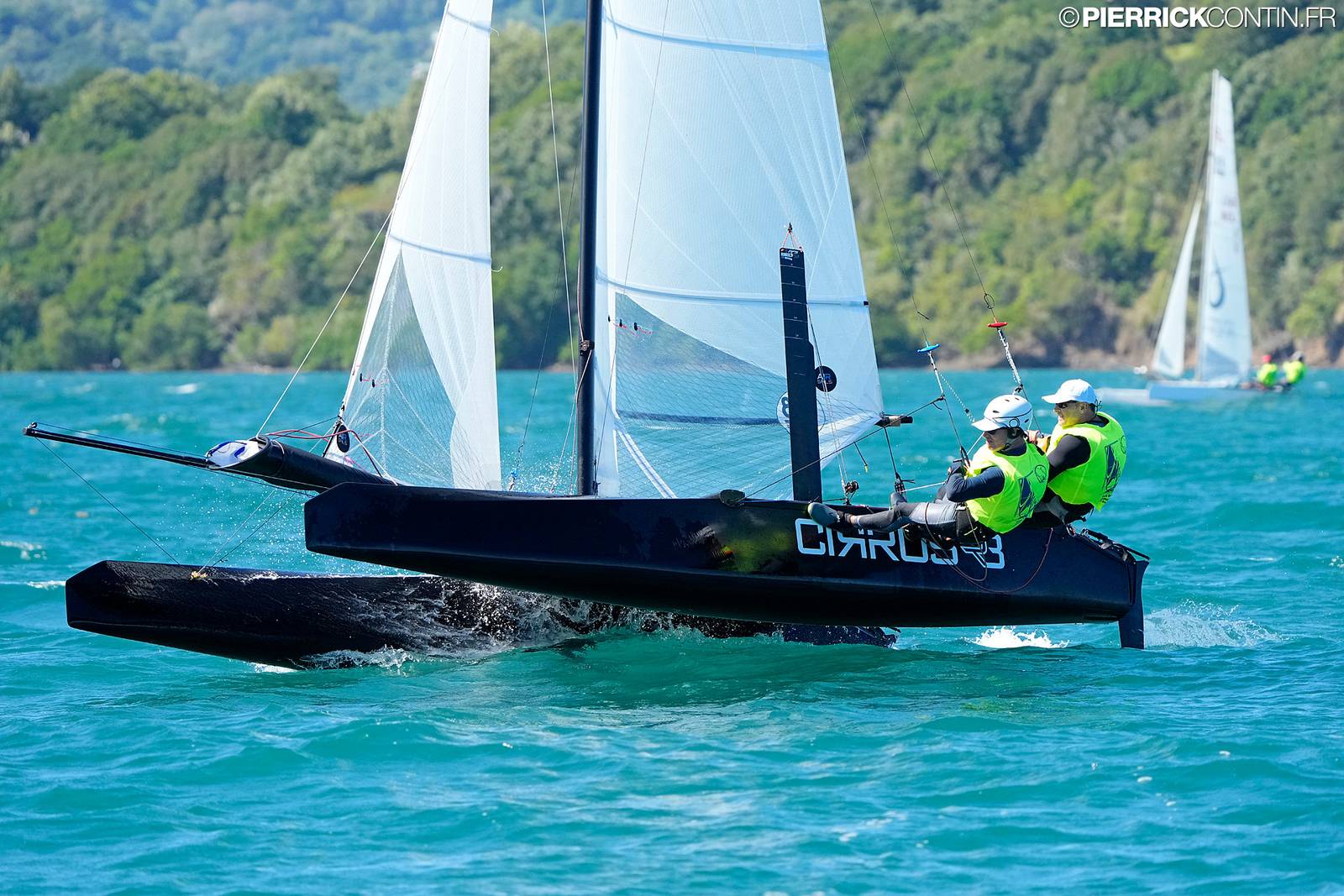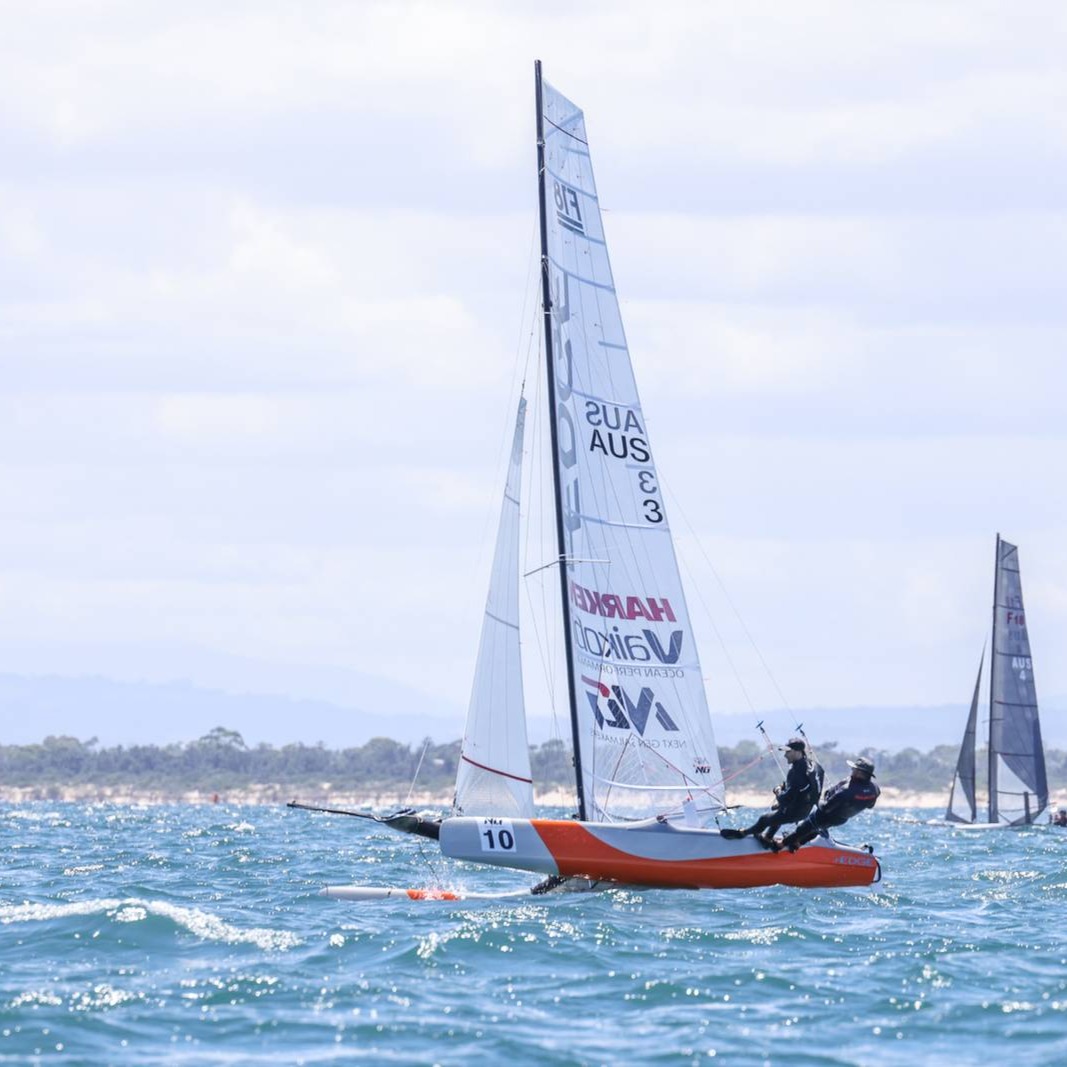MW680F (69F) : New Foiling Monohull concept



 Now known as the 69F Foiling Monohull –
Now known as the 69F Foiling Monohull –


 Above, renders of a concept foiler sent by local Arg & talented designer Laureano Marquinez & his partner Nahuel Wilson. Laureano & Nahuel have been working for years in several well known projects like Volvo winning boats, AC with Artemis , even for last Cup at Bermuda, also currently drawing some undisclosed big gun.
Above, renders of a concept foiler sent by local Arg & talented designer Laureano Marquinez & his partner Nahuel Wilson. Laureano & Nahuel have been working for years in several well known projects like Volvo winning boats, AC with Artemis , even for last Cup at Bermuda, also currently drawing some undisclosed big gun.
Always a little bit aside from the limelight & credits on top notch projects mentioned above in spite of some key work done for them. But this will change for sure with this excellent monofoiler concept.
What I like most of the MW680F is how they based it on a proper floating hull platform, which will serve for a more versatile ride in any condition.
Below description and details of the MW680F, project conceived & designed by Laureano Marquinez & Nahuel Wilson from Wilson-Marquinez studio : wilson-marquinez.com/
They have been working in this lines long time before NZ won the last AC, and following possible transition to foiling monos. The MW680F can become a scaled down version of the next AC60.
To contact them [email protected]
—————————
—————————
Concept (69F as built today)
The MW680F is a foiling one design sport boat concept thought to fill the space open up between the new foiling creatures and the planning yet floating sport boats.
With a crew of 3, it will be challenging and expected to become a wide appeal to sailors from many skill levels, ages, and genders searching for fun, fast, and exciting sailing.
The boat is expected to start flying at around 8 knots of TWS with an asymmetric Spi / Code 0 type of sail set at the prod. It will also be capable to sail fast in conventional mode with both foils fully retracted thanks to stability provided by wings and an efficient mono-hull shape. This flexibility will be valuable for a gradual warm up on the foiling learning process and more relaxed sail back to dock when required.
Deck.
Deck has been kept as simple as possible with wings instead of trapezes for easier, more friendly sailing. An important feature and design principle was that when retracted foils are kept inside wings max width to improve safety by minimizing crew exposure to foils. This will allow also to protect foils when docking.
A self-tacking jib was the way to go so crew has more hands available to take care of foils during gibes and tacks. Traveler and backstay were avoided while retractable wings and bowsprit will help ease of transport.
Appendages
Foil shape configuration is a V type to control ride height as much as possible allowing to reduce required rake adjustment within foiling range, a type of shape which is also more forgiving in chopped sea state. Slight modifications would be expected for a final design as there has been developments since we put have together this concept.
With a slightly curved strut we have maximized extension to leeward improving righting moment while at the same time achieving an easy to use up-down system.
A lifting rudder was best for docking and transport while elevator angle of attack is adjustable for wind range by means of rudder rake as it is usually done.
Keel will be lifting for transport and docking only with a deep bulb centerboard mainly thought to ease righting the boat in the event of capsize by increasing boat positive stability.
Rig.
Standard rig configuration is a simple swept aft single spreader aluminum mast. While idea is to keep costs down, the use of a carbon mast will be explored along with a rotating configuration as several advantages are achieved such as ease of assembly due to its lighter weight besides of obvious performance gains.
Main is square and of high aspect ratio resembling more to a multihull type of main due to the more similar sailing characteristics that are going to be seen on this boat. Self tacking jib area was maximized as reasonably possible for sooner, faster and a wider foiling range. Best bowsprit sail configuration and area will be further optimized for target boat weight, crew and righting moment.
Construction.
Hull and deck will be PVC cored and built in epoxy and E-glass while carbon fiber is used for rudder, foils and other parts where strength and weight saving is mandatory such as wing structural pipes.
Standard Specifications
General:
Length Overall: 6,8 m
Hull Beam: 2,1 m
Max. Beam With Racks Out: 3,5 m
Max. Beam With Racks Folded: 2,5 m
Draft: 0,35-1,55m
Boat displacement: 300 kg
Bulb Weight: 60 kg
Crew Weight: 210-260kg
Rig and Sail Dimensions:
Upwind Sail Area: 33.2m²
Spinnaker Area: 46m²
wilson-marquinez.com
[email protected]
———————————–
———————————–




























I just heard that my great sailing friend and former CEO of Hobiecat Europe has passed. May The endless oceans…
...Report was sent by an F18 Sailor, if you want Hobies reported send your own, we'll publish as usual. Cheers.
Looks like in your report the Hobies are not really present. Suggest to rewrite the article.
Thanks for the great report Wik. Great battle.
If I correctly read the results the overall winner this year is a Hobie16